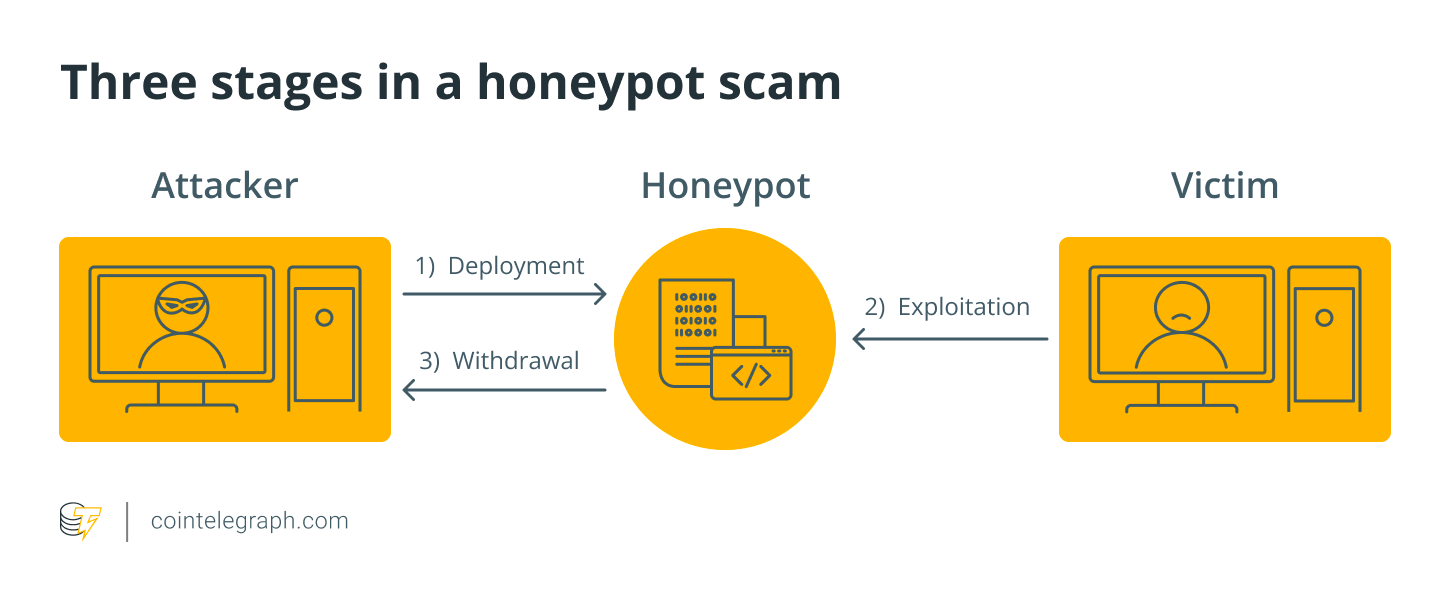
The Silent Threat in Decentralized Finance
The world of cryptocurrency, while offering exciting opportunities, is unfortunately rife with scams. Among the most deceptive is the “honeypot” – a type of malicious smart contract designed to lure investors into a seemingly profitable token, only to prevent them from ever selling and retrieving their funds. These traps, cleverly disguised as legitimate investment opportunities, exploit the trust and excitement surrounding new crypto projects. Understanding how honeypots operate is crucial for anyone venturing into the decentralized finance (DeFi) space.

How Honeypots Work: A Calculated Deception
At its core, a honeypot is a smart contract specifically engineered to exploit investors. The process generally unfolds in three stages. First, the scammer deploys a contract that looks like any other token, complete with price charts, liquidity, and often, a dedicated community and marketing materials designed to build hype. The token is often listed on decentralized exchanges (DEXs) or promoted across social media platforms to attract attention and investment. Once investors take the bait and purchase the token, the hidden restrictions in the contract are activated, preventing sales. This means buyers can put their money in, but cannot take it out. This is typically achieved by disabling the sell or transfer functions for all wallets except the scammer’s.
Red Flags and Tactics to Watch Out For
Several warning signs can help you identify a honeypot before you invest. One of the most critical is the inability to sell a small amount of the token after purchasing it. Before committing significant funds, try a “test sell” to verify whether you can exit the position. Another red flag includes unusually high sell taxes. These taxes, sometimes disguised as a percentage or hidden altogether, can prevent any realistic profit from trading. Be cautious of new tokens that come with excessive or poorly explained fees. Furthermore, scrutinize the liquidity pool. A honeypot might fake liquidity to give the illusion of real trading activity, but once people buy the token, liquidity is then pulled, trapping the funds. Also, watch out for the ‘honeypot-as-a-service’ (HaaS) kits, that enable even non-technical criminals to launch scams with ease.
Beyond the Code: Modern Honeypot Tactics
Scammers are constantly evolving their methods. Modern honeypots extend beyond smart contract tricks to include exploiting hardware and social engineering. Fake cold wallets sold through platforms like TikTok, preloaded with compromised private keys, are a prime example. These devices appear legitimate but are designed to steal funds as soon as they are used. Always buy wallets from trusted sources and initialize them yourself, never using a pre-configured device. Furthermore, beware of sudden hype and aggressive marketing. If a new token promises unrealistic returns or fosters a sense of urgency, it is wise to pause and conduct further research.

Distinguishing Honeypots from Rug Pulls
While both honeypots and rug pulls are forms of crypto scams, they differ in their mechanics. A rug pull involves the developers draining the liquidity pool, leaving the token worthless and investors unable to sell. A honeypot, on the other hand, prevents selling from the beginning, trapping users within the contract. While a rug pull is often a swift exit, a honeypot is a carefully designed prison. Both result in financial loss, but understanding the distinctions can help you recognize the risks and adopt suitable security measures.
Protecting Yourself in the Crypto Wild West
Navigating the crypto landscape requires caution and due diligence. Tools like smart contract scanners (e.g., Honeypot.is) can analyze contracts for malicious code. Always independently verify information and research any project thoroughly before investing. Consider the smart contract’s structure, fees, and liquidity to reduce the risks. In the fast-paced world of decentralized finance, staying informed and vigilant is your best defense against these insidious traps. Educate yourself, verify everything, and never invest more than you can afford to lose. Remember, in the cryptocurrency realm, security is paramount.


